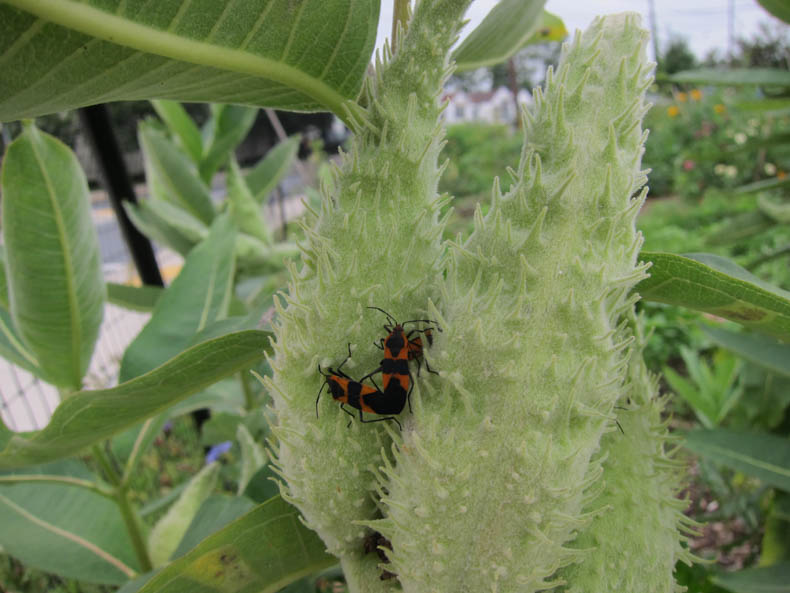Recently I’ve been noticing the milkweed pods, doing their thing, so I thought today would be a good day to revisit these old pictures of my favorite local patch of milkweed. Originally published Nov 21, 2014.
About halfway between my apartment and my office is a community garden.
In a corner of that community garden is a milkweed plant.
I first noticed it in early September, because of the brightly-colored animals crawling all over it. These, I learned from the internet (thanks, internet), are milkweed bugs. They eat milkweed seeds by poking their pokey proboscises into the milkweed pod.
The next time I walked by, the milkweed bugs had been replaced by ladybugs.
I first encountered milkweed in elementary school. Some sort of outdoor education trip introduced me to the milkweed pods in the fall, when they turn brown and spill out their seeds in a cloud of white. I collected the downy-soft white hairs and, budding hoarder that I was, kept them in a cloth bag for years.
So, this fall, I knew that haze of seed was coming. Almost every weekday, I checked them as I passed the corner of the garden. Finally, in early November, it started.
The word for a seed pod that dries and splits like this is “dehiscent.” It is dehiscent. It dehisces. The event is a dehiscence.
Milkweed is best known for being the plant that monarch butterfly caterpillars eat. It’s the only kind of plant that mama monarchs will lay eggs on. When the babies hatch, they start eating. And eat, and eat, and turn into adults, and mate, and lay eggs, and die, and then those babies eat–one of the crazier facts about monarchs is that it’s a different generation that makes the southward migration to Mexico.
The decline of milkweed is thought to be a big part of why there are fewer monarchs making that trip these days. So a lot of nice people plant milkweed to help the insects out.
I didn’t realize until I started looking up milkweed facts for this blog post that there is more than one species of milkweed. The USDA lists 76 species. An article in the New York Times this week mentioned an interesting problem: tropical milkweed, one of the easiest kinds of milkweed to find and plant, may actually do more harm than good to the monarchs.
I could probably identify this plant if I had some flowers (wrong time of year) and an identification key (I don’t).
But Twitter came through. Good news: three out of three people who saw my picture think it’s a common milkweed, not the tropical one that I just today learned to worry about.
Spread your hairs, little seeds. And fly!
Photos: Helen Fields





